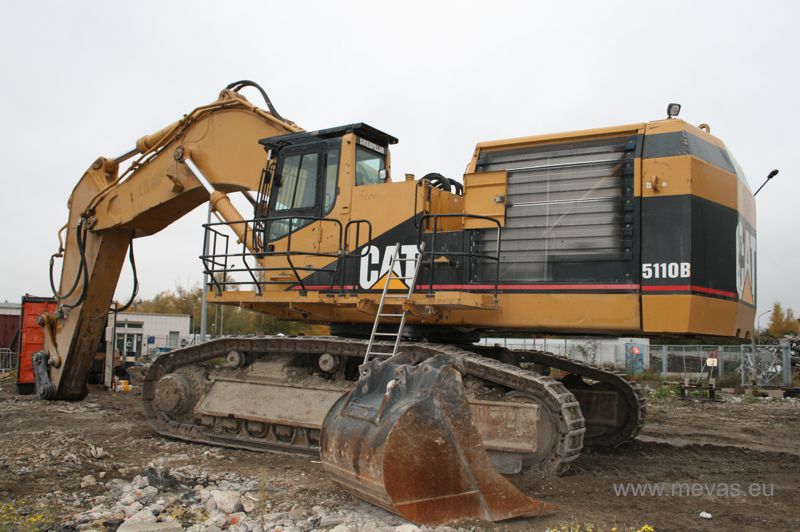It is an important for contractors and traders of used machinery to ask themselves: How can I purchase second hand equipment without being conned and/or losing money?
Buying heavy machinery from unknown suppliers can sometimes pay off, but it is often more likely that unforeseen circumstances cause the buyer to lose money.
Shopping for used excavators or loaders
The safest way to buy a used machine would be through an established supplier that is both nearby and well-respected. However, it is not always possible to purchase the particular used machinery that you’re looking for locally.
This is because: 1) local suppliers may have not the desired equipment in stock, and 2) if local suppliers do offer the equipment, it usually must travel through multiple independent, and potentially untrustworthy, middle men.
Plenty of websites offer used construction machinery. The recommended path would be to find a website focused on your regional market, depending on where you would prefer to source used machinery. In North-America, Rock & Dirt or Machinerytrader are strong and have a large selection.
In Europe, Mascus and Machineryzone are well-respected. In Australia, Constructionsales is probably the No.1 website.
The disadvantage of most machinery websites
Most websites offer a selection for each specific type of machine. It is often possible to configure search parameters such as year manufactured, hours used or price. But what is if someone is looking for a 25 ton excavator on tracks with a long stick? What is if a contractor is looking for a wheel loader with 3.5m³ bucket volume or at least 180 HP? On most known machinery websites today, it is unfortunately impossible to search for technical criteria.
 How trustworthy are machinery sales websites?
How trustworthy are machinery sales websites?
It is just the nature of things that not all relevant information is shown online. Information on machinery websites is only as good as the people responsible for the input. Sometimes the desk clerk just doesn’t know which information is correct or important.
But other times details about features, equipment condition, and maintenance is not shown because it might discourage a potential customer from purchasing the item. Used machine dealers are always using creative ways to sell their wares.
Condition of used machinery
The worst traders in machinery use a lot of paint and a few spare parts to improve (only) the exteriors of the equipment. Many dealers are short on staff and small workshops are crowded with sold machines. If a larger trader has several branches, it often happens that the Used Equipment Manager doesn’t sign off on each machine as it leaves the yard. That person would then have no idea about the real condition of the machinery.
Transporting heavy machinery
Globalization has made it easy to purchase equipment from almost anywhere. But is it reasonable to pay $15,000 shipping for a $50,000 machine? Probably not. It would make sense instead to investigate from which areas you can easily and most inexpensively import an excavator or crane.
Evaluating the options
Buying an excavator or a wheel loader above 15 tons and with an age of less than 10-12 years is an expensive investment; therefore, I recommend having a clear strategy for the purchase process. First, you need to determine the target machine size or weight.
The next important decision would be the brand. Which producer is able to supply spare parts and has service staff available in the vicinity? Then you’d need to study spec-sheets to select the specific type of machinery you need. Would a Komatsu PC360-LC be suitable or is a PC360 NLC the better choice? Is a Caterpillar 336D a good selection or would it be better to search for a CAT 333E?
Once these judgements are made, the database search can start. In most online databases, it is possible to search for
particular types of machinery.
A good tool to use to compare products is a simple table. It can help to sort the offers
by providing a clear overview.
Receiving accurate information from seller
Most dealers offer a set of pictures for every used machine. If photos or details are missing, it is a good idea to ensure you see these before purchasing.
The missing pictures might be of parts in worse condition.
The supplier should also provide the machine’s serial number – otherwise it is likely that the trader is selling a machine he doesn’t actually own, or he may have another reason for hiding the number.
Checking equipment history
When reviewing a selection of possible machines, it would be wise to contact a dealer of this brand to check the service history of each machine.
Major dealers typically have a database with service history and can check if the hour level on a used machine is reasonable. Some may also have a database with stolen equipment.
These precautionary checks should be the first steps when evaluating used machinery for purchase.
Evaluating the supplier
The most difficult part of the purchase process is verifying the provider. Nowadays scams are well-executed and often extremely difficult to detect.

